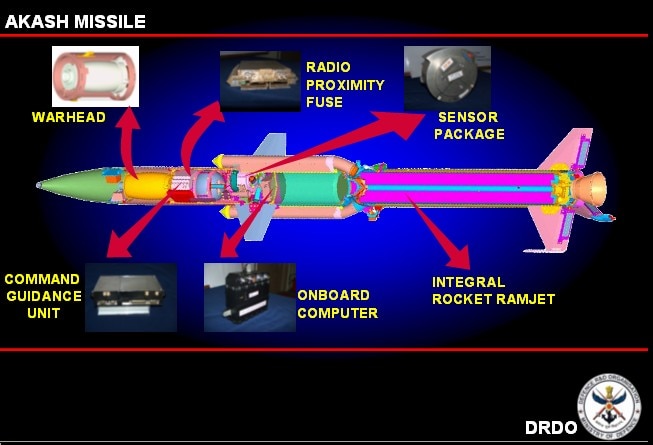
- Akash Prime missile scored two confirmed kills at 15,000 feet in Ladakh during a test
- Akash Prime is a high-altitude variant with an indigenous Radio Frequency seeker for targeting
- The system has a 20 km range and was key in Operation Sindoor against Pakistani aerial threats
At 15,000 feet in Ladakh, the Army achieved a significant milestone with the Akash surface-to-air missile. The new variant of the system - Akash Prime - scored two confirmed kills during a test run.
Akash Prime is a new variant of the Akash Mark 1 and Mark-1s, the systems that saw action during Operation Sindoor in May this year. The Prime variant destroyed two high-speed unmanned aerial targets. The test marked the first such trial of Akash Prime at high altitudes.
Akash Prime will form the third and fourth regiments of Akash missiles in the Army. The weapon system has been modified to operate in altitudes above 4,500 metres and has the latest upgrades, including an indigenously developed Radio Frequency seeker, which beams out radio signals, and uses them during its terminal phase to track and destroy targets.
India has achieved a significant milestone by successfully destroying 2 Aerial High Speed Unmanned targets at high altitude in Ladakh Sector on 16th July by Akash Prime, which is the upgraded variant of Akash Weapon System for the Indian Army. pic.twitter.com/DjJAc5uzkk
— रक्षा मंत्री कार्यालय/ RMO India (@DefenceMinIndia) July 17, 2025
Akash is a surface-to-air missile system with a range of 20 km.
Dr Prahlada Ramarao, a former DRDO scientist, played a key role in developing the missile 15 years ago. Its short range offers protection from aerial threats. It has built-in electronic countermeasures, and the entire system has been configured on mobile platforms, making it a highly manoeuvrable and potent addition to the military.
Read more: "Happiest Day...": The Man Behind Akash System That Stopped Pak Missiles
Each launcher carries three missiles, which operate in a 'fire and forget' mode. These missiles are approximately 20 feet long and weigh 710 kg. Each missile carries a 60kg warhead.

The system is deployed on tracked vehicles of the Army for all-weather, all-terrain deployment
Photo Credit: DRDO
The missile uses an integral ramjet rocket propulsion system, and an onboard digital autopilot ensures stability and control. The missile has all the way command guidance for the full range of operation.
The system is also fully automatic and has real-time, multi-sensor data processing and threat evaluation capabilities, and works rapidly from acquiring, identifying, and neutralising targets.
The Akash NG (Next-generation) variant will have a longer range compared and is under development.
Akash Strikes During Op Sindoor
The weapons system developed by DRDO and Bharat Electronics Limited (BEL) played a crucial role during Operation Sindoor by being part of India's multi-layered air defence system that thwarted Pakistan's attempt to target Indian cities and defence establishments.
India deployed its India's Integrated Air Command and Control System - An automated system that integrates data from forces to combat aerial threats.
Read more: Guardians Of The Sky - India's Integrated Air Defence That Outfoxed Pakistan
The multi-layered air defence system, as explained through a diagram, shows Counter Unmanned Aerial Systems (C-UAS), ack-ack air defence guns like the L70, ZSU 23 Shilka, Man Portable Air Defence Systems (MANPADS) forming the inner layer of air defence for very-short range aerial targets like low-flying drones.

This is followed by the second layer, which includes point defence systems that protect a specific area or an asset, short-range surface-to-air missiles (SAMs) like Spyder, Pechora, and OSA-AK. The third layer is formed by the medium-range SAMs like Akash and the Indo-Israeli MRSAM, and the outer layer for area-defence is done by long-range SAMs like the S-400 and the fighter jets.
Lt General Rajiv Ghai, Director General of Military Operations, used a cricket analogy to stress that it was India's multi-layered counter-drone and air defence grid that acted as a shield against Pakistan air attacks, where he talked about the Ashes series of the 1970s, when two Australian fast-bowlers Jeff Thompson and Dennis Lillee were the Australian defence against the English batting line-up, quoting an iconic line, "Ashes to Ashes. Dust to dust. If Lillee don't get you, Thommo must..." to explain India's integrated air defence which includes the Akashteer system.
Track Latest News Live on NDTV.com and get news updates from India and around the world

